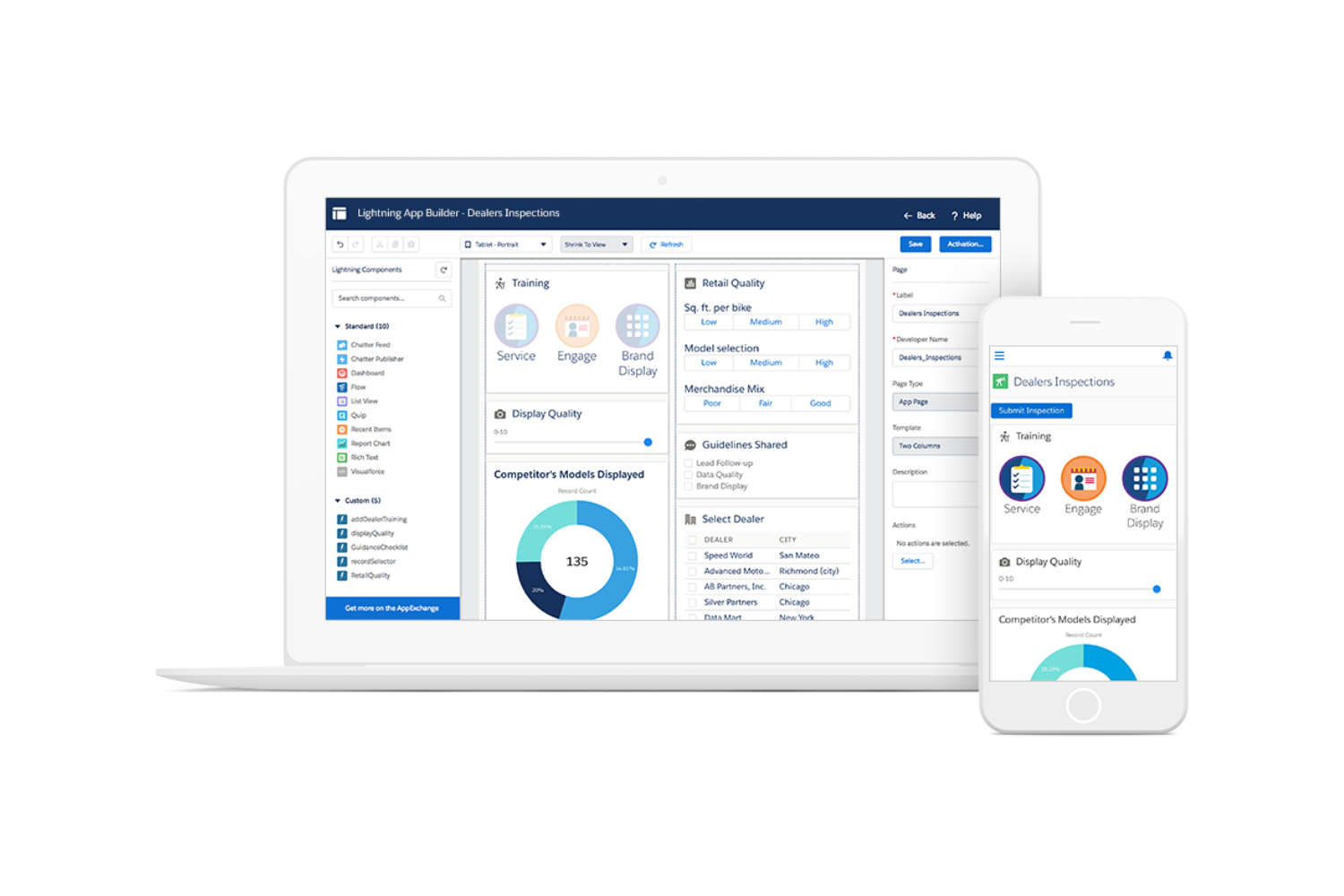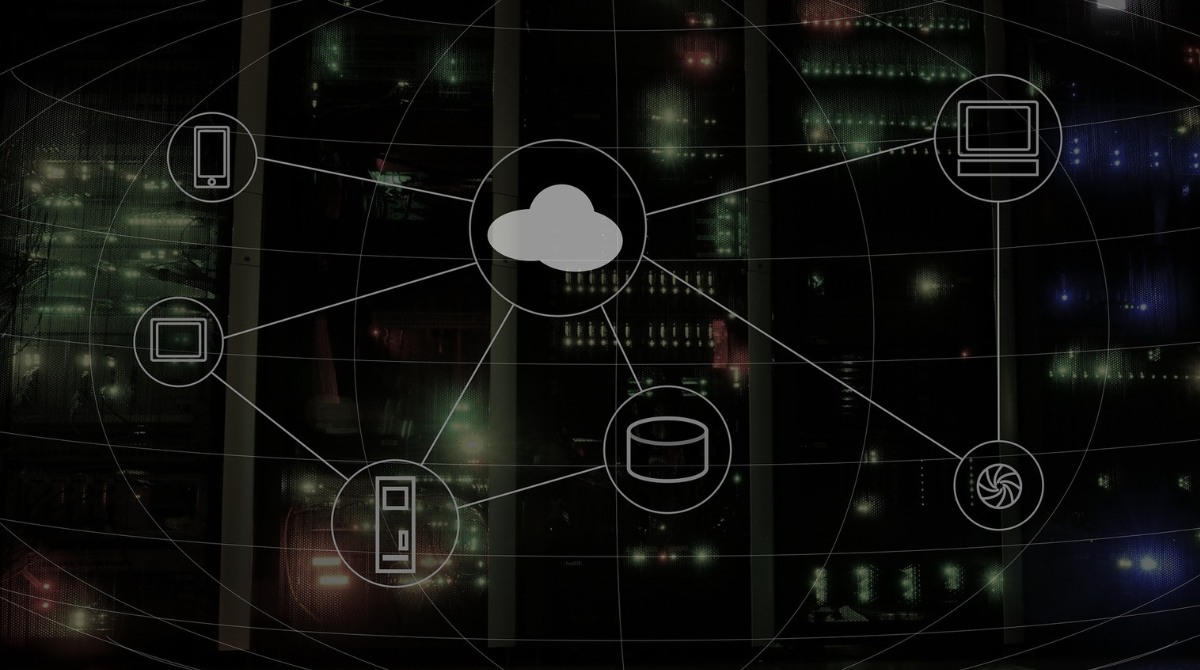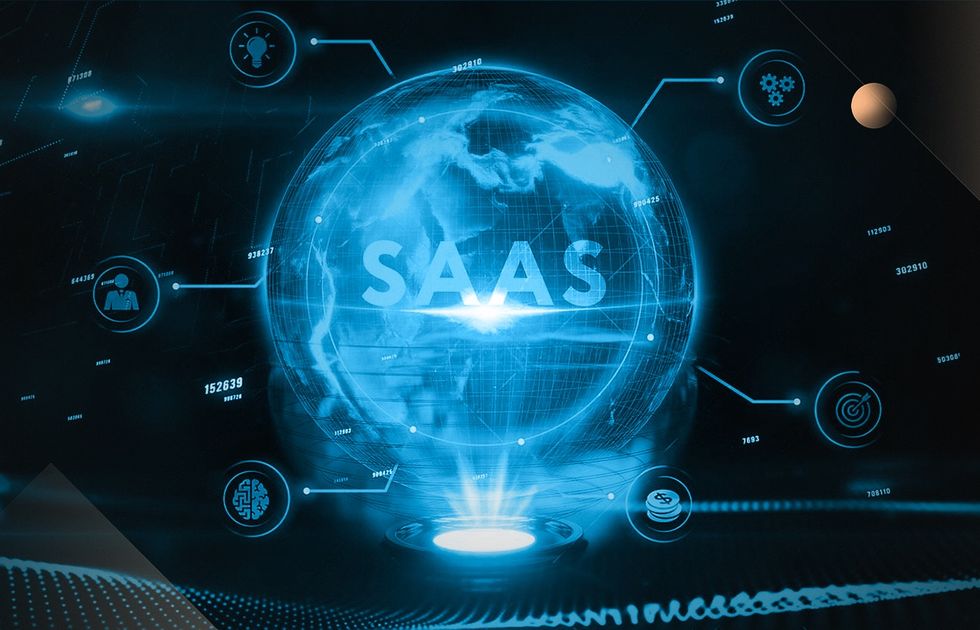Introduction
Welcome to the world of Software as a Service (SaaS) – a revolutionary software delivery model that has transformed the way businesses operate. In this era of technological advancements, organizations are constantly seeking innovative solutions to streamline their operations and stay ahead of the competition. SaaS offers a unique approach to software deployment, providing flexibility, scalability, and cost-effectiveness.
SaaS is reshaping the traditional software landscape by providing access to software applications over the internet, eliminating the need for on-premises installations. This groundbreaking model has gained immense popularity due to its numerous benefits, including reduced IT overhead, enhanced collaboration, and simplified maintenance.
Whether you are a small startup or an established enterprise, understanding the SaaS model can be crucial in determining the most efficient way to leverage technology for your business needs. In this article, we will explore what SaaS is, how it works, and the advantages and disadvantages it brings to the table.
So, if you are intrigued by the concept of SaaS and want to know how it can revolutionize your business operations, read on to uncover the key insights into the world of Software as a Service. Get ready to explore a cutting-edge software delivery model that has disrupted the industry and transformed the way modern businesses operate.
What is SaaS?
Software as a Service (SaaS) is a software delivery model where applications are delivered to users over the internet. Unlike traditional software, where users need to install and maintain the software on their own devices or servers, SaaS allows users to access software applications through a web browser or a dedicated client.
With SaaS, users can simply subscribe to the service on a pay-as-you-go basis, eliminating the need for hefty upfront costs for software licenses or infrastructure setup. The software provider takes care of hosting, security, updates, and maintenance, allowing users to focus on their core business activities rather than IT management.
One of the key features of SaaS is multi-tenancy, which means that the software provider serves multiple customers through a single software instance. Each customer’s data is isolated and secure, ensuring privacy and data protection. This shared infrastructure enables economies of scale and allows the software provider to offer the service at a much lower cost compared to traditional software licensing models.
SaaS applications cover a wide range of functionalities, including customer relationship management (CRM), enterprise resource planning (ERP), project management, human resources, and collaboration tools. This model has revolutionized the software industry by democratizing access to advanced software solutions, making them affordable and accessible for businesses of all sizes.
Besides reducing upfront costs, SaaS also offers the advantage of scalability. As businesses grow or experience fluctuations in demand, they can easily adjust their subscription to match their current needs. This flexibility allows organizations to scale their software usage up or down without the constraints of hardware limitations or complex software installations.
In summary, SaaS is a software delivery model that offers a cost-effective and scalable solution for businesses. By shifting the responsibility of software management to the provider, businesses can focus on their core activities while leveraging advanced software applications through a subscription-based model.
Advantages of the SaaS Model
The SaaS model brings numerous advantages to businesses of all sizes. Let’s explore some of the key benefits:
- Cost-effectiveness: One of the primary advantages of SaaS is its cost-effectiveness. Unlike traditional software, where businesses incur high upfront costs for licenses and hardware, SaaS operates on a subscription-based model. This means businesses can pay for the software as they use it, avoiding hefty initial investments. Additionally, SaaS providers handle software maintenance, updates, and infrastructure management, further reducing IT costs.
- Accessibility and scalability: SaaS applications are accessible from anywhere with an internet connection. This enables businesses to easily expand their operations globally or allow remote employees to collaborate seamlessly. Furthermore, with the scalability offered by SaaS, organizations can quickly add or remove user licenses or upgrade software capabilities to align with their evolving needs.
- Rapid deployment and updates: With SaaS, businesses can eliminate the time-consuming process of software installations and setup. The software is already hosted in the cloud, ready to use upon subscription. Additionally, SaaS providers regularly release updates and enhancements, seamlessly delivering the latest features to subscribed users without any disruption or effort on their part.
- Ease of collaboration: SaaS platforms often come equipped with built-in collaboration tools, allowing team members to work together efficiently. This facilitates real-time communication, document sharing, and version control, enhancing productivity and fostering a collaborative work environment. Team members can access and collaborate on projects simultaneously, regardless of their geographical location.
- High security and data protection: SaaS providers invest heavily in robust security measures to protect customer data. They employ advanced encryption, firewalls, and other security protocols to safeguard data from unauthorized access or breaches. Furthermore, regular backups and disaster recovery plans ensure business continuity and minimize the risk of data loss.
- Integration and customization: SaaS solutions often offer integration capabilities that allow businesses to connect their software with other essential applications. This enables seamless data flow, process automation, and comprehensive analytics. Moreover, SaaS platforms typically offer customization options, allowing businesses to tailor the software to their specific needs and workflows.
Overall, the SaaS model presents a host of advantages, including cost-effectiveness, scalability, accessibility, rapid deployment, collaboration, high security, and integration capabilities. These benefits make SaaS a compelling choice for businesses seeking efficient, flexible, and cost-effective software solutions.
Disadvantages of the SaaS Model
While the SaaS model offers numerous benefits, it is important to be aware of its potential disadvantages. Let’s take a closer look:
- Dependency on internet connectivity: Since SaaS applications are accessed over the internet, a reliable and high-speed internet connection is essential for uninterrupted usage. Businesses operating in areas with limited internet access or unreliable connections may face challenges in utilizing SaaS solutions effectively.
- Limited customization options: Although SaaS applications often offer some level of customization, they may not provide the same level of flexibility as on-premises software. Businesses with highly specialized workflows or unique requirements may find it challenging to fully tailor the software to their needs, potentially requiring workarounds or compromises.
- Data security concerns: While SaaS providers invest significantly in security measures, some businesses may have concerns about storing sensitive data in the cloud. This is especially relevant for industries with strict compliance regulations or businesses dealing with highly confidential information. It is crucial to thoroughly research and choose reputable SaaS providers with robust security practices.
- Limited control over updates and upgrades: With SaaS, providers are responsible for updating and maintaining the software. While this eliminates the burden of manual updates, businesses may have limited control over the timing and impact of updates. Updates may introduce changes in functionality or user interface, requiring users to adapt and potentially impacting their workflows.
- Vendor dependency: Adopting a SaaS solution means relying on the vendor for ongoing support and service. If a vendor faces financial difficulties, changes its business strategy, or discontinues a particular product, it can have a significant impact on the subscribing businesses. It is crucial to choose reputable vendors with a track record of stability and customer satisfaction.
While these disadvantages exist, the SaaS model continues to evolve and improve, often addressing many of these concerns. It is important for businesses to carefully evaluate their specific needs, weigh the pros and cons, and choose a reputable SaaS provider that aligns with their requirements and security concerns.
How Does the SaaS Model Work?
The SaaS model operates on a cloud-based infrastructure, where software applications are hosted and delivered to users over the internet. Here’s a simplified breakdown of how the SaaS model works:
- Software Development and Hosting: SaaS providers develop and maintain the software applications. They handle all aspects of architecture, development, testing, and deployment, ensuring the software is reliable and secure. The applications are hosted on their servers in data centers or the cloud.
- User Access and Subscription: Users access the software through a web browser or a dedicated client provided by the SaaS provider. Rather than purchasing software licenses upfront, users subscribe to the service on a pay-as-you-go basis. This subscription-based model allows businesses to adjust their usage and costs based on their specific needs.
- Security and Data Management: SaaS providers prioritize data security, employing robust measures such as encryption, firewalls, and regular backups to protect customer data. They also manage data storage, ensuring data privacy and compliance with relevant regulations. Users can have confidence that their data is well-managed and secure.
- Maintenance and Updates: SaaS providers handle software maintenance, updates, and enhancements. They release updates regularly, seamlessly delivering new features and improvements to subscribed users without any additional effort required. This eliminates the need for users to manually install updates or patches, ensuring they have access to the latest version of the software at all times.
- Scalability and Integration: SaaS offerings are designed to be scalable and flexible. As businesses grow or experience fluctuations in demand, they can easily scale their subscription to match their requirements. Additionally, SaaS applications often offer integration capabilities, allowing businesses to connect their software with other essential tools and systems, enabling seamless data flow and process automation.
The SaaS model provides businesses with the advantages of accessibility, scalability, cost-effectiveness, and simplified software management. Users can access their software applications anytime, anywhere, without the need for complex installations or maintenance. With a reliable internet connection, businesses can leverage advanced software solutions, focus on their core activities, and adapt to changing business needs with ease.
Common Examples of SaaS
The SaaS model is widely adopted across various industries, and there are numerous examples of popular SaaS applications that businesses rely on for their daily operations. Here are some common examples of SaaS:
- Customer Relationship Management (CRM) Software: CRM platforms like Salesforce, HubSpot, and Zoho CRM are popular SaaS solutions that help businesses manage their customer interactions, track sales opportunities, and streamline marketing efforts. These platforms offer features such as contact management, sales pipeline tracking, customer support, and analytics.
- Enterprise Resource Planning (ERP) Systems: SaaS-based ERP systems like NetSuite, SAP Business ByDesign, and Oracle ERP Cloud provide comprehensive solutions for managing key business processes, including finance, human resources, inventory, and supply chain management. These platforms help organizations achieve operational efficiency, streamline workflows, and gain visibility into their resources.
- Collaboration and Communication Tools: SaaS collaboration tools like Microsoft Teams, Google Workspace (formerly G Suite), and Slack enable seamless communication and collaboration within teams. These platforms offer features such as instant messaging, video conferencing, file sharing, and project management, fostering teamwork and enhancing productivity.
- Human Resources Management Systems (HRMS): SaaS HRMS platforms like BambooHR, ADP Workforce Now, and Zenefits provide comprehensive solutions for managing HR processes, including employee onboarding, time and attendance tracking, payroll management, benefits administration, and performance management. These platforms simplify HR workflows and enable efficient workforce management.
- Accounting and Financial Software: SaaS accounting software such as QuickBooks Online, Xero, and FreshBooks help businesses manage their financial operations. These platforms offer features like invoicing, expense tracking, financial reporting, tax management, and integration with banking systems, making financial management more efficient and accurate.
- Project Management Tools: SaaS project management tools like Asana, Trello, and Monday.com facilitate effective project planning, task tracking, and collaboration. These platforms enable teams to organize their projects, assign tasks, track progress, and collaborate in real-time, improving project outcomes and team productivity.
These are just a few examples of the diverse range of SaaS applications available. The SaaS model is utilized in various other domains, including marketing automation, e-commerce, customer support, content management, and more. By leveraging these SaaS solutions, businesses can access powerful software applications without the need for complex infrastructure setup, enabling them to focus on core functions and drive growth.
Key Features of SaaS
The SaaS model offers a range of key features that differentiate it from traditional software delivery models. Understanding these features can help businesses make informed decisions about adopting SaaS solutions. Here are some of the key features of SaaS:
- Subscription-Based Pricing: SaaS operates on a subscription-based pricing model, where businesses pay for software usage on a periodic basis. This pay-as-you-go approach allows for greater flexibility and cost control, as businesses can scale their subscriptions according to their needs.
- Cloud-Based Delivery: SaaS applications are hosted in the cloud, which means users can access them via the internet from any device with a web browser or a dedicated client. This cloud-based delivery eliminates the need for on-premises installations, reducing upfront costs and eliminating hardware limitations.
- Multitenancy Architecture: SaaS applications typically employ a multitenancy architecture, where multiple customers or organizations share a single instance of the software. Each customer’s data remains isolated and secure, ensuring privacy and data protection.
- Automatic Updates and Maintenance: SaaS providers handle software updates, maintenance, and security patches. This means users automatically receive the latest features and enhancements without the need for manual updates or disruptions to their workflow. It also offloads the burden of software management from businesses.
- Scalability and Elasticity: SaaS solutions are designed to be highly scalable, allowing businesses to easily adjust their subscription level as their needs evolve. This scalability ensures that businesses can align their software usage with their current demands, whether they are experiencing rapid growth or temporary fluctuations in user numbers.
- Integration Capabilities: SaaS applications often come with built-in integration capabilities, allowing them to seamlessly connect with other essential tools and systems. This enables businesses to streamline data flow and automate processes, improving efficiency and reducing manual work.
- Accessible from Anywhere: SaaS applications can be accessed from any location with an internet connection. This accessibility empowers businesses with remote teams or multiple office locations to collaborate effectively and access their software and data effortlessly, promoting flexibility and productivity.
- Data Security and Privacy: SaaS providers prioritize data security and employ advanced measures to protect customer data. They typically implement encryption, firewalls, and regular backups to safeguard data from unauthorized access and minimize the risk of data loss.
These key features make SaaS an attractive software delivery model for businesses, offering cost-effectiveness, flexibility, accessibility, automatic updates, scalability, integration capabilities, and robust security measures. By leveraging these features, businesses can streamline their operations, focus on core activities, and stay competitive in the ever-changing business landscape.
Choosing the Right SaaS Solution
Choosing the right SaaS solution for your business is a critical decision that can significantly impact your operations and success. Here are some key factors to consider when selecting a SaaS solution:
- Business Needs and Requirements: Start by identifying your specific business needs and requirements. What are the key functionalities you require from the SaaS solution? Consider factors such as scalability, integration capabilities, customization options, and industry-specific features to ensure the solution aligns with your business goals.
- Vendor Reputation and Reliability: Research the reputation and track record of potential SaaS vendors. Look for reviews, testimonials, and case studies to assess their reliability, customer satisfaction levels, and commitment to ongoing support. Choosing a reputable vendor with a solid track record can provide peace of mind and minimize the risk of disruptions.
- Data Security and Compliance: Ensure that the SaaS provider has robust security measures in place to protect your data. Assess their data encryption practices, backup protocols, and compliance with relevant data protection regulations. Consider whether the solution allows you to maintain control over your data and provides adequate safeguards against unauthorized access or data breaches.
- Ease of Use and User Experience: Evaluate the usability and user experience of the SaaS solution. Take advantage of free trials or demos to test the user interface and explore the features and functionalities. An intuitive and user-friendly interface will minimize the learning curve for your team and maximize adoption and productivity.
- Scalability and Flexibility: Consider the scalability options offered by the SaaS solution. Can it accommodate your anticipated growth and evolving needs? Ensure that the pricing and licensing models are flexible enough to allow you to add or remove users, upgrade or downgrade features, and adjust your subscription as your business requirements change.
- Support and Customer Service: Assess the level of support and customer service provided by the SaaS vendor. Do they offer timely and responsive support channels, such as email, phone, or live chat? Check if they provide comprehensive documentation, knowledge bases, or online communities to help users troubleshoot issues independently.
- Integration with Existing Systems: Consider the compatibility and integration capabilities of the SaaS solution with your existing systems and workflows. Evaluate whether it can seamlessly integrate with your preferred tools, such as CRM or accounting software, to ensure smooth data flow and eliminate manual data entry.
- Pricing and Total Cost of Ownership: Evaluate the pricing structure and total cost of ownership of the SaaS solution. Consider factors such as upfront costs, subscription fees, additional charges for add-ons or extra users, and the potential for price increases over time. Assess the ROI potential of the solution and weigh it against your budget and projected benefits.
By carefully considering these factors, you can make an informed decision when choosing the right SaaS solution for your business. Take the time to evaluate your options, compare different vendors, and prioritize a solution that meets your unique needs, offers reliable support, and aligns with your long-term growth strategy. Remember, choosing the right SaaS solution can significantly contribute to your business success and drive operational efficiency.
Conclusion
The Software as a Service (SaaS) model has revolutionized the way businesses access and utilize software applications. By providing access to software over the internet, SaaS offers numerous advantages such as cost-effectiveness, scalability, accessibility, automatic updates, and simplified software management. It has transformed the software industry, enabling businesses to leverage advanced solutions without the need for complex infrastructure setup or large upfront investments.
Throughout this article, we explored the key aspects of the SaaS model. We discussed what SaaS is and how it differs from traditional software delivery models. We also examined the advantages and disadvantages of SaaS, highlighting the flexibility, cost savings, and collaborative potential it brings, as well as potential concerns around customization and data security.
Furthermore, we explored the key features of SaaS, including subscription-based pricing, cloud-based delivery, multitenancy architecture, automatic updates, scalability, integration capabilities, and robust security measures. These features make SaaS an attractive option for businesses looking to streamline operations and stay competitive in today’s digital landscape.
In addition to that, we delved into the process of choosing the right SaaS solution. It involves considering factors such as business needs, vendor reputation, data security, usability, scalability, support, integration, and pricing. By carefully evaluating these factors, businesses can make an informed decision that aligns with their specific requirements and goals.
As technology continues to advance, the SaaS model is expected to evolve further, offering even more innovative features and solutions. Businesses should stay current with emerging trends and developments in the SaaS space to leverage the latest advancements for their operations.
In conclusion, the SaaS model presents businesses with a cost-effective, flexible, and efficient way to access and utilize software applications. By understanding the key aspects and considerations involved in adopting a SaaS solution, businesses can make informed decisions that drive efficiency, collaboration, and growth.

























